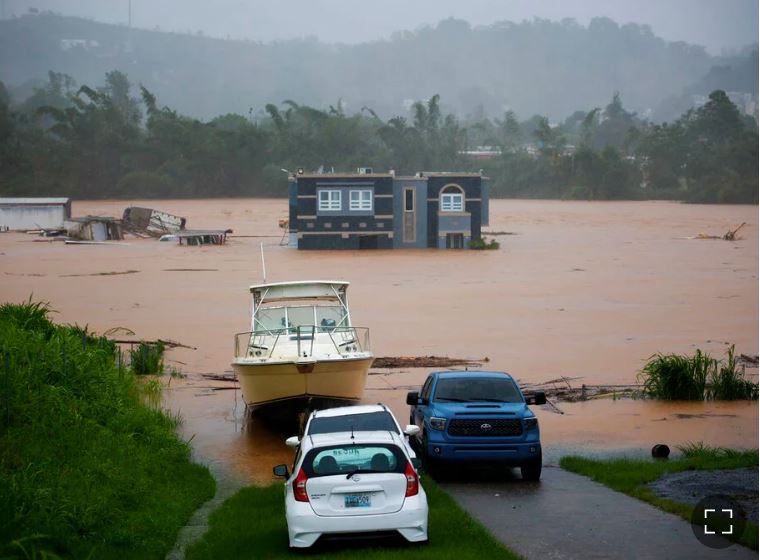
By Anastasia Moloney
BOGOTA (Thomson Reuters Foundation) – Hit with ever-more-frequent torrential rain that triggers worsening flooding and mudslides most years, Rio de Janeiro is looking to an unusual gathering for answers: a hackathon.
Starting Saturday, teams of university students, tech start-up leaders, software developers and computer engineers will try to come up with innovative ways to help the seaside Brazilian city limit its losses as climate change brings wilder weather.
Tech experts at the city hall-led event hope to, for instance, come up with new ways to leverage data from GPS systems already used in the city’s buses to allow emergency services to better understand and monitor floods in real time.
“We know we have problems of floods and heavy rains, and we see an opportunity to use GPS to know where the flooding and landslide incidents are,” said Simone Silva, a mobility advisor at city hall and one of the organizers.
Right now, “at the very local level, we don’t know exactly what happens,” she told the Thomson Reuters Foundation.
RISING URBANIZATION
Around Latin America, tens of millions of people are at risk from worsening flooding linked to climate change, many of them living in urban slums often built along rivers or on mountain slopes prone to landslides.
About 80% of Latin America’s people live in the region’s urban areas, according to the United Nations.
But across the region, cities are working to cut the risks, harnessing technology, better data and insights from affected communities to come up with new ways to keep people safe.
Flooding is clearly seen as one of the most severe threats. Of 530 cities worldwide that reported their climate hazards in 2018 to CDP, a London-based international environmental non-profit, 71% said floods were their top worry.
Extreme heat came next, at 61%, followed by drought at 36%, according to the study, published last month.
But over half of cities have not carried out risk assessments to map which areas, residents and businesses are under threat from extreme weather, the study found.
“We have seen that cities that take vulnerability assessments, they take six times as many actions to adapt as cities that haven’t done them,” said Kyra Appleby, who heads the CDP’s cities, states and regions team.
Geographic information system (GIS) technology that allows data about hazards and climate risks to be overlayed with existing maps of cities has made it easier for authorities to do risk assessments, she added.
That and other technologies are among the measures being used in a range of cities around Latin America to deal with worsening economic and human losses from floods.
In recent decades, Rio de Janeiro, for instance, has put in place early warning systems to help evacuate people ahead of threats, mapped of floodplain areas, built shelters and conducted emergency drills in slum areas, Appleby said.
The city also has installed cameras to monitor street flooding and set up social media alert systems.
Other cities are introducing digital sensors to try to cut risks. Argentina’s capital, Buenos Aires, is developing a network of sensors to monitor rainfall and feed back data in real time to the city’s central control centre.
Ensuring climate change adaptation measures are included in all urban planning is crucial, Appleby said, noting that the city of Belo Horizonte, in Brazil’s Minas Gerais state, is one of those leading the way.
“It’s in the process of creating a new masterplan for the city and they are integrating all their adaption measures into their masterplan. That is really ahead of the curve,” she said.
To be effective, climate adaption plans must include the input of local communities, according to Anjali Mahendra, head of research at the World Resources Institute Ross Center for Sustainable Cities.
“Latin American cities are particularly good with involving communities,” she said.
That’s largely because early urbanization in the region means cities have had longer experience working with informal settlements and other disadvantaged communities, she said.
African and South Asian cities, facing rapid urbanization are “starting to learn from some Latin American cities,” Mahendra said.
Colombia’s second city of Medellin and Ecuador’s capital Quito – which has a climate change panel that includes youth, women and indigenous groups – in particular have worked hard to include local communities in decisions about urban planning and climate risks, said Mahendra.
USING NATURE
To tackle growing flood threats, more investment also is needed in “nature-based solutions” – such as expanding green areas to absorb floodwaters, said Pedro Ribeiro, head of the Urban Flooding Network at C40, a group of cities pushing climate action.
Creating green buffer areas to stem urban sprawl and protecting and restoring degraded ecosystems around cities, including forests, watersheds, grasslands and wetlands, can help slow the movement of water and avoid flooding, he said.
“It’s easier to recover ecosystems that were in the city before building .. and the results are better” than trying to establish wholly new anti-flooding systems, Ribeiro said.
(Reporting by Anastasia Moloney @anastasiabogota, Editing by XXXX. Please credit the Thomson Reuters Foundation, the charitable arm of Thomson Reuters, that covers humanitarian news, women’s and LGBT+ rights, human trafficking, property rights, and climate change. Visit http://news.trust.org)












